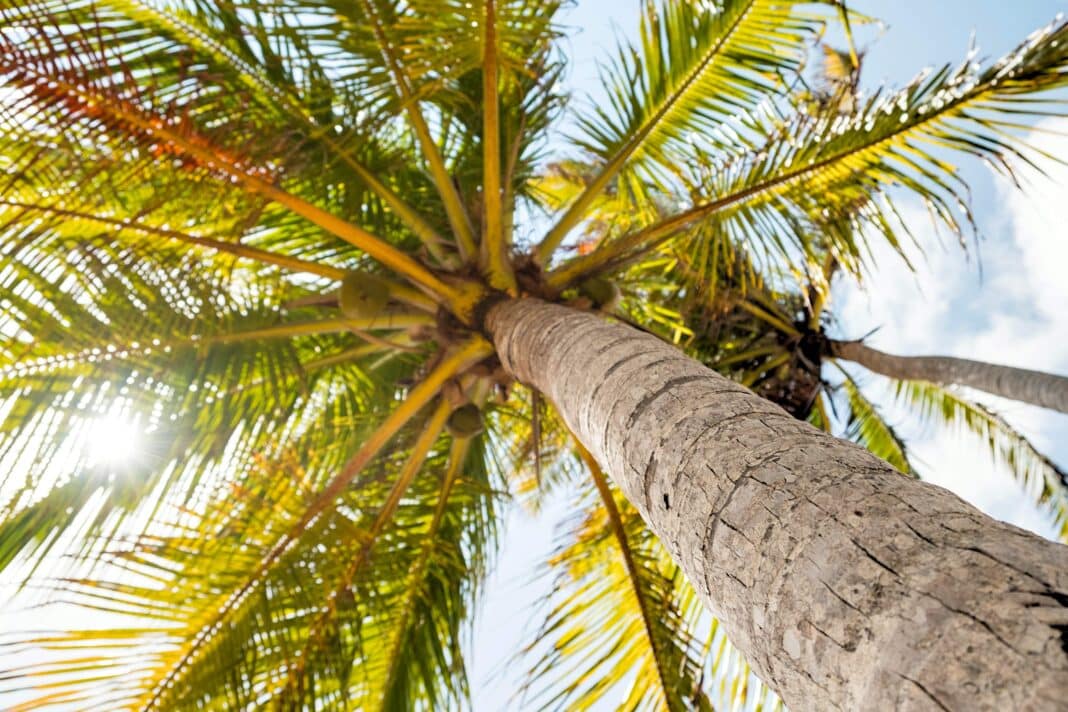Fiji has big plans for coconuts, with researchers and engineers across the Pacific working to capitalise on its abundance of mature coconut palms to create high-value engineered wood products – a bold plan to incentivise farmers to remove disease-invested coconuts, protecting the very future of coconuts in the region.
The project is 17 years in the making, with Moana Bergmaier-Masau, an Engineer from the international development organisation SPC, telling ABC Science’s Carl Smith yesterday that researchers are developing new products for the palms-riddled coconut rhinoceros beetle, which threatens the long-term survival of healthy coconut palms.
According to the FAO, 50-60% of Fijian coconut trees are overaged or senile with Ms Bergmaier-Masau telling Mr Smith that many of Fiji’s coconut groves are entering less productive phases simultaneously.
“This is thanks to an old boom for coconut oil and copra,” Ms Bergmaier-Masau said, adding that a massive surge of coconut trees were planted during the copper boom and again after the First World War. “There was a huge surge in coconut oil at that timber before canola took over, and soybean and palm oil took over after that.”
Known as the “Tree of Life”, coconuts are hugely beneficial for local communities in the Pacific; from shells to husks, fronds to copra, milk, oils, creams and medicines, they are the lifeblood of Fijian communities and businesses alike. However, until now, timber-based products have made a bridge too far.
“There’s an outer hardness on the periphery,” according to Ms Bergmaier-Masau, “and that sort of comes into the centre.” “Inside the wood is quite crumbly,” before adding that the density between the interior and exterior is much more pronounced than with other trees.
“Plus, the fact that their trunks are so skinny makes things even more challenging, leaving few usable stem sections with the same density.”
But that all changes thanks to a new product in development: cocowood or cocoveneer, the world’s newest engineered wood product.
Last year, Wood Central exclusively revealed that the Australian and Queensland Governments, the University of Queensland and Griffith University were busy working with the Fiji Ministry of Forestry and Pacific Communities to develop a viable market for the new product.
Part of a suite of ACIAR research programmes, Dr Robbie McGavin, the lead researcher from the Queensland Department of Agriculture and Fisheries, said the research has and continues to provide “valuable information about the characteristics of coconut woody tissue and different processing equipment that can be used to produce and dry rotary veneer and make products from the veneer.”
Before adding that “one of the many challenges remains to identify some markets for the end-product, testing economics and social factors along the value chain and supporting commercial adoption.”
Cocowood is free of imperfections, without growth rings and knots, and ranges from light sandy to deep chocolatey brown. The stripy coconut pattern is just a thin sheet bound together with lower-density pine underneath.
“So we have wall panelling here. So you could have your veneer on the top and have a different low density, probably a grade C pine. And then you could just put the face of it as a veneer, which would magically transform it into a beautiful production,” Ms Bergmaier-Masau said.
Ultimately, coconut wood is a thin slice of wood veneer, concealing a lower-quality and less appealing wood over its core. “Though you wouldn’t know, pine wood sits just a few millimetres beneath the surface,” Mr Smith said. You peel them, cut them into certain lengths, and then glue them together.”
This combination gives a visually striking product thanks to the coconut veneer without blowing the bank thanks to the low-cost interior. It’s also firm but solid and smooth. Plus, it won’t walk or fray like bigger coconut wood planks do.
While the new type of timber is not suitable for beams or thick planks—like glue-laminated timber, laminated veneer lumber, or cross-laminated timber—”it is perfect for floors and wood panelling, maybe even furniture and joinery,” Ms Bergmaier-Masau said.
This is all thanks to a new type of spindleless veneer peeling and cutting technology, which allows for greater recovery from smaller diameter logs and reduces the processing problems previously experienced with small, fast-growing trees—not just in Fiji but also in faraway Indonesia and Malaysia, which are also using peeling to create coconut wood products.

But it’s not just the value of opportunities to use cocowood to kickstart Fiji’s multi-million dollar timber industry that is exciting engineers. The new programme has the potential to “incentivise harvesting and kick off a replanting effort across the country,” Ms Bergmaier-Masau said. This would give a much-needed boost to coconut production and free up land for agroforestry.
Ms Bergmaier-Masau said, “This will solve a bunch of other problems at the same time, including helping villagers get rid of old trees before they fall,” adding that many villagers get quite scared when they get old and would instead plant a new seed instead of risking damage from tree fall.
And then there is the risk poised from rhinoceros beetle.
Since its discovery 17 years ago, the beetle has damaged at least 25% of coconut trees in Guam and is spreading rapidly across the Pacific. “So turning all of these weaknesses into strengths by creating a new industry for coconut wood could be a big boost for farmers, landowners, the environment, and the economy at large,” Mr Smith said.
- To learn more about the cocowood project, click on Wood Central’s exclusive interview with Dr Robbie McGavin. To listen to the full ABC Science interview, click here.







